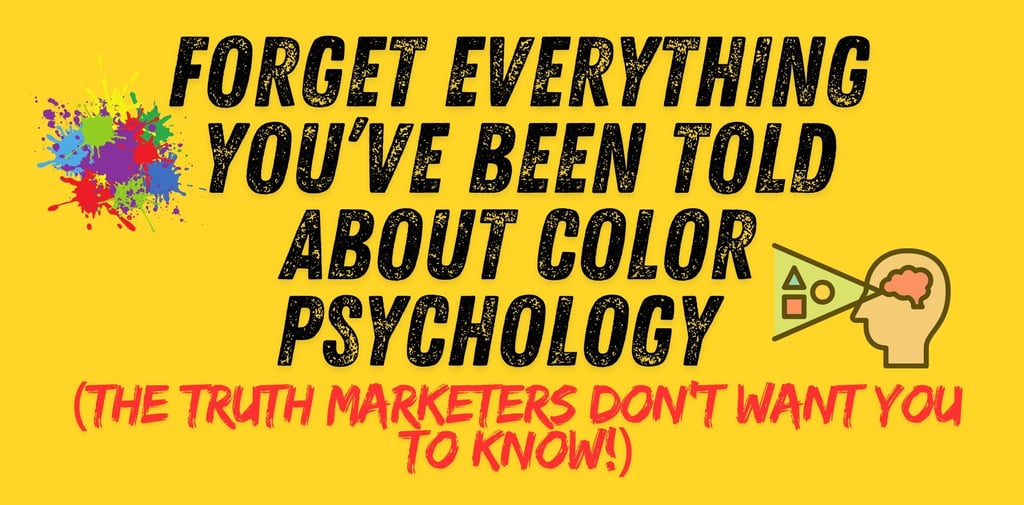Forget Everything You’ve Been Told About Color Psychology (The Truth Marketers Don't Want You to Know!)


Are you still following outdated color rules in your designs?
It's time to rethink everything you know about color psychology.
Let's shatter a common myth:
There's no universal "color language" where blue automatically means trust or purple equals luxury.
Marketing "experts" will tell you:
⬆️ "Blue means trust!"
🟩 "Green means growth!"
🟪 "Purple means luxury!"
But here’s the truth: Color doesn’t work that way. ❌
The Science Behind Color Perception
Color preferences aren’t universal - they’re personal. Your favorite color isn’t about psychology; it’s about your life experiences.
✔ If blue brings back memories of your favorite childhood toy, you’ll love blue.
✔ One bad experience with a green car, and suddenly green is your least favorite color.
✔ Most humans dislike brown… and we don’t need to explain why. 💩
This is called Ecological Valence Theory - no two people see color exactly the same way.
Your vibrant blue might be someone else’s "meh."
But don’t worry, not everything about color is subjective!
3 Universal Color Principles That Actually Matter 🧪
While we can't control personal preferences, science has proven that three properties influence everyone the same way:
1. Temperature (Warm vs. Cool) 🌡️
Temperature affects how we perceive color:
🔴 Warm colors (red, orange, yellow) feel physically closer. They create urgency and grab attention.
🔵 Cool colors (blue, green, purple) feel farther away. They create a sense of calm.
That’s why red "Buy Now" buttons outperform blue ones - it’s not about meaning, it’s about proximity.
👉 Pro Tip: Need urgency? Use warm colors.
2. Saturation (Vividness) 📼
The brightness of a color matters more than the color itself.
🟠 Higher saturation = More noticeable, looks bigger.
🟢 Lower saturation = Less noticeable, looks smaller.
💡 Fun Fact: A study on luggage shopping showed that people picked vibrant colors when they wanted large suitcases and pale colors for compact ones - same suitcase, different perception!
👉 Pro Tip: Want an element to stand out? Boost the saturation.
3. Value (Lightness) ⚪⚫
Background colors create strong psychological effects:
🟨 Light backgrounds = Transparency and trust (think: banking websites).
🔇 Dark backgrounds = Privacy and exclusivity (think: luxury brands & adult-only sites).
👉 Pro Tip: Need trust? Use a light background. Need privacy? Use a dark background.
👉 Example: Your online banking app is light for trust, while adult-only websites are dark for privacy. Coincidence? Nope.
The Takeaway 🤔
Stop asking "What's the right color?". Instead, ask yourself:
Does this need to feel urgent? → Use warm colors. 🔴
Should this element stand out? → Increase saturation. 📼
Are we building trust? → Use a light background. ⚪
Do users need privacy? → Use a dark background. ⚫
Success in color design isn't about picking the "perfect" color - it's about understanding and leveraging these universal properties while respecting the personal nature of color preference.
That’s it. Pick any color you like — just nail these three properties.
🔔 Follow for More: Don't miss out on future articles packed with practical tips and inspiring ideas.
Visit my website Kamaleonte Marketing.
Subscribe to my newsletter AI Sapiens.
Stay informed, stay adaptable, and keep thriving
